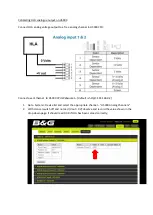
Chapter 4, Safety and Patient Care Precautions
67
Haemonetics
®
Cell Saver
®
Elite
®
User Manual
P/N 120745-IE, Manual revision: AA
Preventing Problems During a Procedure
Understanding
the Risk of
Hemolysis
Warning: Forcing a pump to work against a severe flow restriction can lead
to hemolysis, and thus, consequently high levels of free hemoglobin in the
plasma.
Hemolysis involves the destruction of RBC membranes with the release of free
hemoglobin into the plasma portion of the blood. Free hemoglobin does not
have the capacity to transport oxygen and can produce serious problems. The
remnants of the RBC can stimulate clot formation and damage the vascular
nature of the lungs and the kidneys. This could lead to respiratory
complications and/or renal failure.
Hemolysis can occur during a procedure in the rare event of a mechanically
induced situation, such as overheating or excessive pressure. It can also be
caused by the use of non-isotonic wash solutions.
The Cell Saver Elite device uses the effluent line sensor to check for the
presence of excessive free hemoglobin during Wash. Wash will be extended if
the free hemoglobin levels are not within an acceptable range. In some rare
instances, hemolysis may occur as the bowl is emptied, after Wash and after
the effluent line sensor check has been passed. Since the presence of free
hemoglobin in the RBC bag may not be readily apparent, the user should
monitor for other indications of abnormal operation. A restriction which causes
hemolysis may also cause a reduction in flow rate and result in an abnormally
long time required to empty the bowl. The device is programmed to detect
abnormally long Empty and Return phases and notify the user with an alert.
If the user visually confirms that the bowl is still not empty, a sample
should be taken from the RBC bag prior to transfusion to the patient to
determine the presence of free hemoglobin.
If the bowl is empty, this could indicate a problem with the air detector
and the user should contact the local Haemonetics representative.
Avoiding Flow
Restrictions
Warning: The user must avoid blocking any tubing carrying blood from the
pump. A buildup of pressure in this tubing can cause the tubing to rupture
and cause a large blood spill.
The user must ensure that there are no restrictions to flow in the effluent line.
If the outlet port of the bowl is inadvertently clamped off, pressure builds up in
the processing chamber to such an extent that the rotary seal becomes raised,
like a safety valve, to release pressure. This results in the loss of the pocket of
trapped sterile air. The faces of the rotary seal become wet with supernatant
and, depending upon the nature of the supernatant, the functional
















































